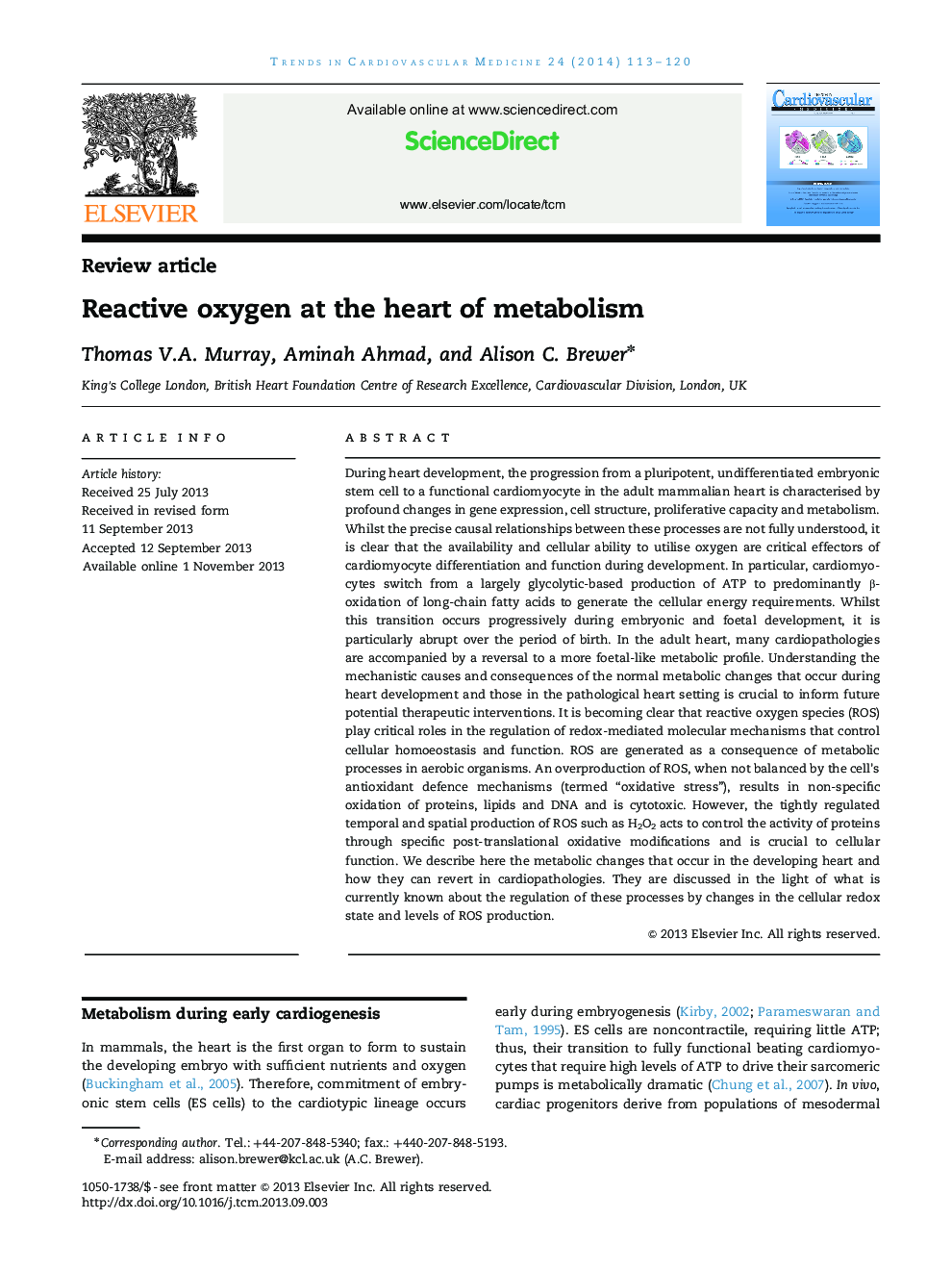| کد مقاله | کد نشریه | سال انتشار | مقاله انگلیسی | نسخه تمام متن |
|---|---|---|---|---|
| 3030500 | 1183647 | 2014 | 8 صفحه PDF | دانلود رایگان |
During heart development, the progression from a pluripotent, undifferentiated embryonic stem cell to a functional cardiomyocyte in the adult mammalian heart is characterised by profound changes in gene expression, cell structure, proliferative capacity and metabolism. Whilst the precise causal relationships between these processes are not fully understood, it is clear that the availability and cellular ability to utilise oxygen are critical effectors of cardiomyocyte differentiation and function during development. In particular, cardiomyocytes switch from a largely glycolytic-based production of ATP to predominantly β-oxidation of long-chain fatty acids to generate the cellular energy requirements. Whilst this transition occurs progressively during embryonic and foetal development, it is particularly abrupt over the period of birth. In the adult heart, many cardiopathologies are accompanied by a reversal to a more foetal-like metabolic profile. Understanding the mechanistic causes and consequences of the normal metabolic changes that occur during heart development and those in the pathological heart setting is crucial to inform future potential therapeutic interventions. It is becoming clear that reactive oxygen species (ROS) play critical roles in the regulation of redox-mediated molecular mechanisms that control cellular homoeostasis and function. ROS are generated as a consequence of metabolic processes in aerobic organisms. An overproduction of ROS, when not balanced by the cell's antioxidant defence mechanisms (termed “oxidative stress”), results in non-specific oxidation of proteins, lipids and DNA and is cytotoxic. However, the tightly regulated temporal and spatial production of ROS such as H2O2 acts to control the activity of proteins through specific post-translational oxidative modifications and is crucial to cellular function. We describe here the metabolic changes that occur in the developing heart and how they can revert in cardiopathologies. They are discussed in the light of what is currently known about the regulation of these processes by changes in the cellular redox state and levels of ROS production.
Journal: Trends in Cardiovascular Medicine - Volume 24, Issue 3, April 2014, Pages 113–120
